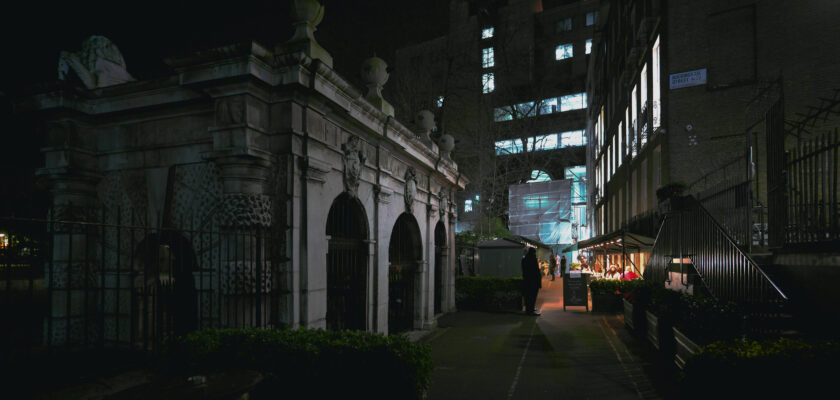Before London’s Victoria Embankment was built, the roads south of the Strand ran down to the river’s edge. There, by the steep river stairs, boatmen waited to ferry passengers along what was then London’s busy main highway – the Thames. Most river stairs were open to the public and served London’s transport needs in a similar way to today’s taxi ranks, tube stations and bus stops.
Other stairs were private and provided quick and easy access to the Thames for their owners. One of these private stairs was known as York Watergate and it was the riverside entrance to York House, one of several mansions which lined the north bank of the Thames between Temple and Westminster. The Survey of London: Volume 18, St Martin-in-The-Fields II: the Strand provides a detailed history of the mansion, which was originally the town house of the Bishops of Norwich. In 1536 it was given to Charles Brandon, Duke of Suffolk, but in 1556 it was surrendered to Queen Elizabeth who granted it to Nicholas Heath, Archbishop of York. On the ‘Agas’ map – a bird’s-eye view of London first printed from woodblocks in about 1561, which is available on Layers of London, the house is shown with its riverside entrance and with a jetty leading to a short flight of steps.
After being leased to a number of tenants, including Sir Nicholas Bacon, the Earl of Essex, and Sir Francis Bacon, the house was given to James I’s royal favourite George Villiers, 1st Duke of Buckingham from 1622. James also gave Buckingham 2,000 tons of Portland stone for rebuilding work, and approximately 200 tons is said to have been used to build a dramatic riverfront entrance to the grounds. By 1626, a striking watergate in the Italianate style had replaced the old jetty, it was popularly thought to have been designed by Inigo Jones, but is now believed to be by master-mason Nicholas Stone.
Since the creation of the Victoria Embankment Gardens, the watergate stands cut off from the Thames. On what was once the river side of the gate, the large central archway and the smaller side openings are flanked by heavily rusticated columns. The Villiers arms in the curved pediment in the centre are surmounted by a ducal coronet and a lion crouches above each of the side bays holding a carved shield with an anchor representing Buckingham’s admiralship. The former garden side of the watergate is inscribed with the Villiers family motto FIDEI COTICULA CRUX (The Cross is the Touchstone of Faith) and is surmounted by some rather fearsome spheres.
(From the City of London Archaelogical Society website)




Comments